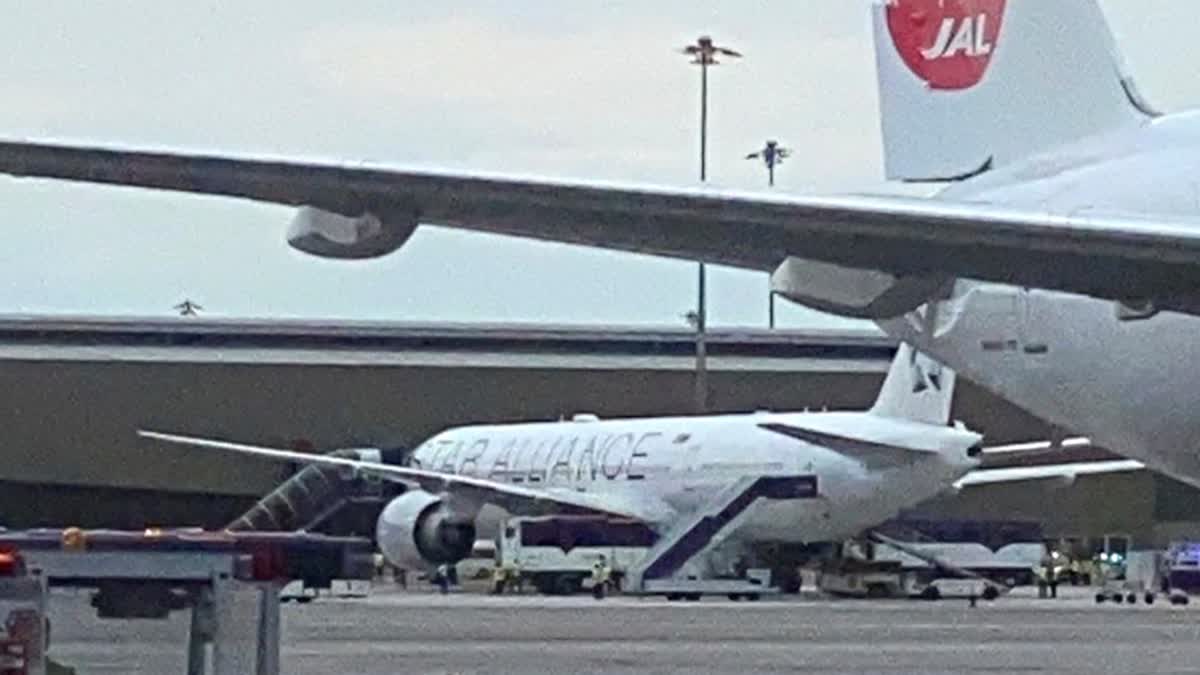New Delhi: According to the flight tracking data Flightradar 24, the Boeing 777 was cruising at an altitude of 37,000 feet but suddenly pitched down to 31,000 feet over a span of about a few minutes.
There were a total of 211 passengers and 18 crew on board. A video of the moment when turbulence hit the aircraft was shared on social media which showed the cabin violently shaking and horrified passengers tightly holding onto seats.
This shocking and frightening incidence has once again ignited the issue of air travel safety amidst the changes in the environment due to climatic changes.
While severe turbulence causes injuries, it has been rare to see a fatality due to turbulence in the recent times. Carriers routinely caution passengers to keep their seat belts fastened even when they have been switched off as unforeseen turbulence may still occur which could lead to unforeseen incidents.
Air Turbulences in Indian Flights
A total of 46 air accidents have been reported since 2018 till December 2022 with 8 in 2018, 10 in 2019, 7 in 2020, 9 in 2021 and 12 in 2022, according to a reply given by Union Minister of State for Aviation Gen. Dr. V.K. Singh (retd) in the Rajya Sabha.
Accidents involving aircraft are investigated by the Aircraft Accident Investigations Bureau (AAIB). Similarly, as many as 23 flights did emergency landings between 2020-2022 with seven in 2020, nine in 2021 and seven in 2022.
In the last two years, several incidence of emergency landings have come up with many of them making emergency landings due to technical glitch, air turbulence, media emergency or after being hit by a bird.
While a few instances of fatalities or small injuries have been reported in such incidents but deaths have been rare.
The last time such incident happened was in 2022 when Akbar Ansari, a passenger who was injured due to turbulence in a SpiceJet flight in May lost his life later.
The family members alleged that Ansari did not receive proper treatment.
In 1980, an Indian Airlines flight experienced severe turbulence in West Bengal’s Rampurhat, killing two out of 132 people.
What Is Air Turbulence?
When the air starts flowing in a random and chaotic manner, it results in air turbulence.
Usually, the wind moves in a smooth, horizontal current, which is called “laminar flow”, at high altitudes. This makes an aircraft to move steadily.
Turbulence takes place when something unforseen happens which disrupts this smooth flow of the wind, and the air moves up and down and in a horizontal direction.
Severe turbulence causes large abrupt changes in aircraft altitude and might lead to aircrafts falling downwards with a few thousand kilometers in a few minutes.
In such a scenario, items fall or lift off the floor and loose items are tossed about the cabin.
Can It Be Prevented?
While, several aviation and environmental experts have claimed that the sudden change in temperatures have led to unusual changes in the climatic pattern and this might led to aircrafts witnessing turbulence.
However, it has not been established that these climatic changes are the only reason behind these turbulences.
"You do an emergency or a precautionary landing as a precaution so that further damage is not done. Similarly, this latest incident of Singapore airline is also a precautionary landing to prevent the further harm", said industry veteran Captain Shakti Lumba — who retired as IndiGo VP and had before that headed Alliance Air said.
He further said that "When an aircraft is found to be in an imminent danger, the pilot makes mayday distress call, then also it is categorised as an emergency landing."
How Can Travellers Stay Safe?
In short, buckle up. Turbulence can be tricky to predict, but experts stress that the first line of defense in the air is keeping the seat belt fastened, whenever possible.
While no precaution is 100% foolproof, wearing a seat belt likely increases an individual's chances of avoiding serious injuries.
How To Reduce The Discomfort?
Aviation to Prof. Adam Taylor, Director of the Clinical Anatomy Learning Centre, Lancaster University, a window seat can help, or even looking out the window. The professor says that the brain will be able to process some sensory information through visual pathways. It will help calm the brain. If you get a window seat, a seat towards the front or over the wing will help reduce the effects of turbulence on you.
Simply breathe. Deep or rhythmical breathing is likely to help reduce turbulence-induced motion sickness, the professor, wrote in an article for The Conversation. "Focusing on your breathing calms the nervous system," he added.
He suggests that one should stay away from the alcohol. While one may think or feel it as means to calm, the effect of alcohol may hit you when you are in a turbulence. While it interferes with your visual and auditory processing, it also increases the likelihood of vomiting.
Finally, it's important to remember that although turbulence can be unpleasant, aircraft are designed to withstand the forces it generates and many passengers, even frequent fliers, will rarely encounter the most severe categories of turbulence because pilots actively plan routes to avoid it, he wrote.
Read More
- Explained: Joe Biden's New West Asia Strategy
- Friendship Marriage: Japan's New Relationship Trend That Excludes Love, Sex
- Explained: Why China's Focus is on Cyber, Info, And Space As It Restructures Its Defence Plans
- Explained: Why You Shouldn't Let Children Eat 'Smoke Biscuits, Paan'; What Experts Say
- Explained: Will China Flood Globe with EVs, Green Tech? What's behind Latest US-China Trade Fight
